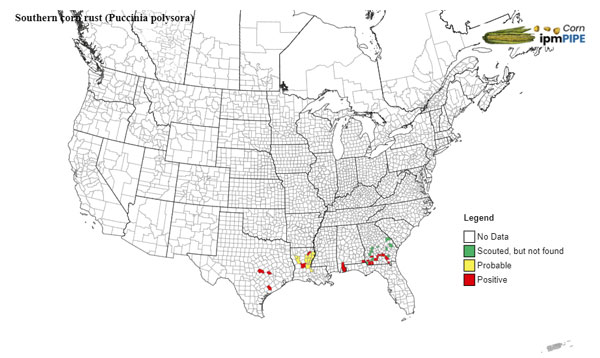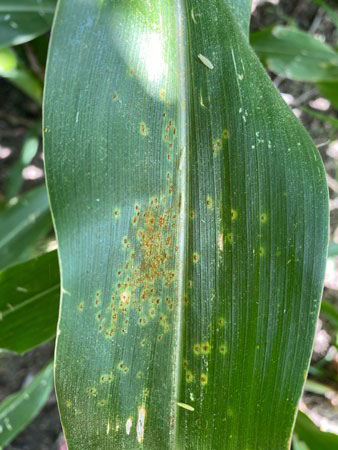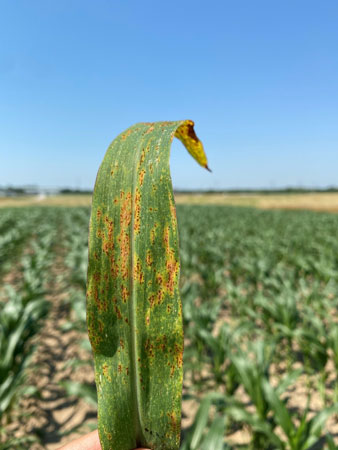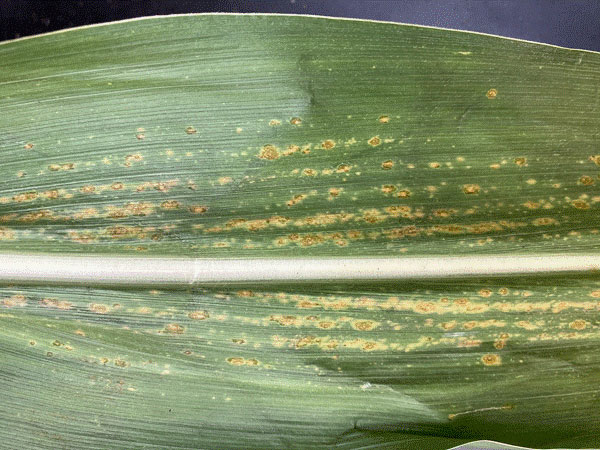Southern corn rust
Southern corn rust (Puccinia polyspora) continuous to spread in the southern part of the US and is now active on corn in Alabama, Georgia, Louisiana and Texas (Figure 1). Although this disease has not yet been reported in Kansas, scouting efforts should continue. The first positive fields in 2019 and 2020 were on July 11 and July 15, but based on the age of the pustules, the disease arrived sometime in mid-June.

Figure 1. Southern corn rust has now been reported in Alabama, Georgia, Louisiana, and Texas as of June 25, 2021. Source: https://corn.ipmpipe.org/southerncornrust/
Southern rust produces characteristic orange pustules of spores, primarily on the upper side of the leaf (Figure 2). If you run your finger across the pustules, the orange spores will be visible on your hand.

Figure 2. Corn southern rust. Photo courtesy of Rodrigo Borba Onofre, K-State Research and Extension.
Common rust
Common rust was reported in the southeast Kansas on July 18, 2021. This disease is typically less serious in Kansas than the other leaf diseases. Symptoms are small round-to-elongated pustules that start out golden brown then turn darker later in the season (Figure 3). Common rust pustules commonly form on both sides of the leaf and are sparser than those of southern rust. This disease can occur wherever corn is grown. Infection is favored by moderate temperatures (60 to 77 degrees F) and high relative humidity (greater than 95 percent for at least six hours).
Common rust is easily controlled by using resistant hybrids. In Kansas, fungicides are typically not recommended for this disease alone since common rust causes only minimal yield loss because of low incidence and severity in later corn growth stages.

Figure 3. Common rust on corn. Photo courtesy of Rodrigo Borba Onofre, K-State Research and Extension.
Lesion mimic
An unusual symptom has been found in a small number of fields in northeast Kansas, known as corn lesion mimic (Figure 4). This symptom can be confused with disease, but no pathogen has been recovered from the lesions. It is believed that this disorder is genetic. Fungicides will not have any effect on this disorder.

Figure 4. Symptoms of corn lesion mimic, a disorder not known to be caused by a pathogen. Photo courtesy Rodrigo Borba Onofre, Kansas State Research and Extension.
Rodrigo Borba Onofre, Postdoctoral Research & Plant Pathology Extension Fellow
onofre@ksu.edu